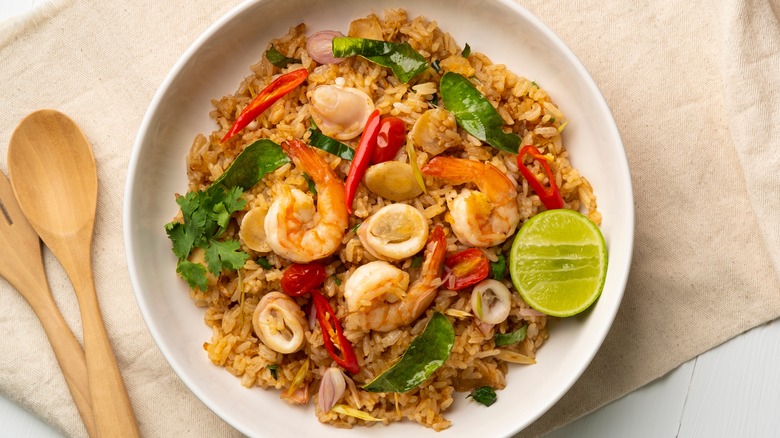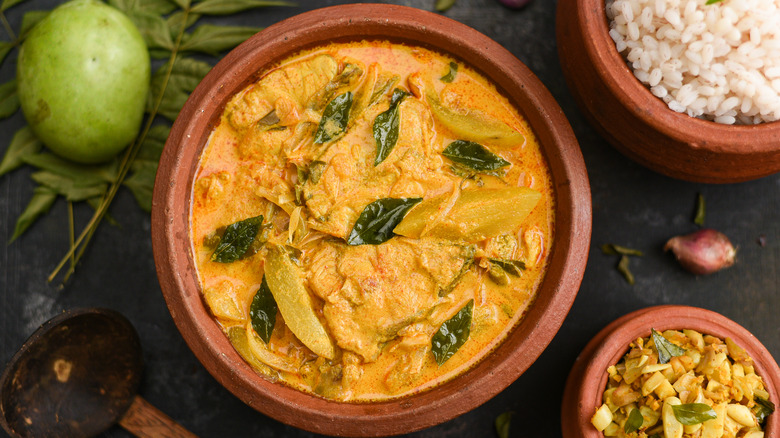Add Curry Leaves To Your Rice For An Ultra Fragrant Dish
The collaboration of curry leaves and rice is a symphony of bold aromas and flavors. This delightful pairing represents a cultural heritage as well as diverse culinary traditions that have embraced the fusion. From the earthiness of the vibrant green, teardrop-shaped curry leaves to the starchy simplicity of rice, the union of these two ingredients is undeniably comforting. The distinct taste of curry leaves is a key element that elevates the profile of any food they touch. Commonly used in southern and southeastern Asian cuisines, the herb possesses a unique combination of citrusy, subtly bitter notes, providing a hint of freshness to the rice's tender, mild texture.
When it comes to buying curry leaves from the produce section, look for stalks that are glossy and verdant. Avoid leaves that are yellowing or have dark spots. The leaves should emit a strong smell. Fresh curry leaves have a distinct fragrance that enhances the overall flavor of the dish.
Curry leaves are a star ingredient in many curries, stews, chutneys, and rice dishes. There are several ways to invite curry leaves to the party. For instance, when curry leaves are added directly to the rice while it's simmering, their oils impart a pleasant fragrance throughout the grains. For soups and stews, it's recommended to toss curry leaves into the pot towards the end of the recipe for a trace of herbaceousness. Fried curry leaves can be used as garnish for snacks such as lentil fritters or pakoras.
Curry leaves and rice offer a versatile menu
Rice and curry leaves are timeless staples in the gastronomic repertoire of cooks around the globe. One quintessential recipe that showcases their magic is karuveppilai sadam, a southern Indian delicacy made with cooked rice infused with heated oil or ghee, mustard seeds, urad dal (a type of lentil), chilies, and of course, curry leaves. The crispiness of the curry leaves, imparted during the tempering process, also known as tadka, renders a palatable crunch to each bite. Another classic, nuvvula annam, melds the nutty richness of toasted sesame seeds and peanuts with the hearty essence of curry leaves.
Karivepaku pulihora is a tangy, spicy dish in which rice is blended with tamarind syrup, mustard seeds, chana dal, urad dal, peanuts, and curry leaves for supplemental layers of luxury. Lemon rice with curry leaves is another popular variation that introduces a tangy twist to the duo. The zesty flavor of lemon, along with the pronounced taste of curry leaves, creates a bright, refreshing forkful. The burst of acidity from the lemon gently cuts through the rice to yield a memorable meal.
Curry leaves add a creamy, tropical dimension to coconut rice. The coconut's sweetness balances the sharpness of the curry leaves (or a possible substitute) to create an interplay of flavors. For those who enjoy a dash of piquancy, curry leaf and cumin rice is a stellar choice. Cumin's warmth complements the savory leaves, bringing a complex depth to perfectly seasoned rice.

